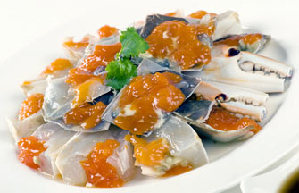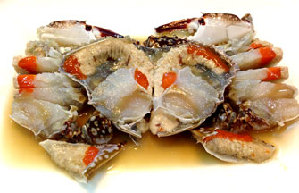Finding the green side of crabs
Liu Baoyu, from the local agriculture bureau, says the cultivation of crabs, fungus and sea cucumbers could meet these requirements very well.
Primary products such as fungus are exempt from agricultural taxes and eligible for financial aid from the local government. By June, 12 companies and 46 rural co-operatives had been set up in Dongying to produce fungus.
Liu says the local fungus industry had reached a turning point. From producing general edible fungus, they are shifting toward the more profitable field of fungus for medicinal purposes.
One of the successful companies is Ronfun. Set up in 2007, Ronfun produces 80 tons of fungus every year and exports its products to Thailand, Singapore and other countries.
The company has just succeeded in cultivating a highly nutritious fungus called cordyceps militaris, which is widely used as a traditional Chinese medicine in Asian countries. Excessive exploitation of the wild fungus has damaged its habitat and led to a surge in its price. The market price of cordyceps militaris is about 600 yuan a kilogram, much higher than ordinary fungus.
Ronfun owes its success to researchers such as Fan Keming, who has devoted a decade to the cultivation of the rare fungus.
"Cordyceps militaris should gain popularity because of its ability to improve the immune system and even fight cancer," the doctor of microbiology says.
Yang Haijun, chief engineer at Ronfun, says that industrialized fungus production has clear advantages over growing fungus at rural households, where the quality is often subject to variations in sanitary conditions and cultivation skills.
As well as crabs and fungus, raising sea cucumbers is another eco-friendly business that the local government has been promoting.
Sea cucumbers were once believed to be only suitable for cultivation on the coastal reef of Liaoning province in Northeast China.
High profits and the nutritious aquatic species' minimal soil requirement have lured many people in Dongying, where the soil contains a high amount of salt and alkalis and where most farmers plant cotton for a small income.
|
 |
 |






















